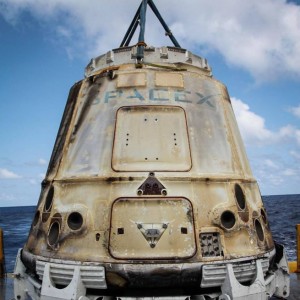Aug
28
Private Space Firm Targets the Moon
“Bang! Zoom! To the Moon!”
Did you miss it? Splashdown!
 Just a couple days ago, SpaceX’s Dragon capsule came home after spending over a month at the International Space Station (ISS). This mission was the 9th (out of a planned 20 under contract) since 2012, when Dragon “became the first commercial spacecraft in history to deliver cargo to the International Space Station and safely return cargo to Earth.” It is still the only such spacecraft that can return large amounts of cargo to Earth.
Just a couple days ago, SpaceX’s Dragon capsule came home after spending over a month at the International Space Station (ISS). This mission was the 9th (out of a planned 20 under contract) since 2012, when Dragon “became the first commercial spacecraft in history to deliver cargo to the International Space Station and safely return cargo to Earth.” It is still the only such spacecraft that can return large amounts of cargo to Earth.
Dragon has been effectively functioning as a remote-controlled shipping container, hauling essential equipment and supplies to the crew of the ISS and returning with, for example, results from various scientific experiments being performed up there — even live mice. All together, it transports thousands of pounds worth of cargo on both legs of its journey. For instance, this time…
“Among the 5,000 pounds of cargo it delivered was a docking ring that will enable astronauts to visit the orbiting research complex in commercial capsules SpaceX and Boeing are developing under NASA’s Commercial Crew Program…. NASA astronauts Jeff Williams and Kate Rubins installed the docking ring, called International Docking Adapter-2, or IDA-2, during a spacewalk last Friday.” (Florida Today)
That’s right. SpaceX is planning manned missions, too. In fact, once it finishes refining and installing the necessary modifications to Dragon for “crew configuration”, two-person crews will suit up for manned flights to the ISS. These are currently scheduled for late-2017 and early-2018.
But, SpaceX isn’t the only commercial space venture with big plans or making news with their progress. Earlier this month, it was announced that the U.S. government has finally approved the first private mission to the Moon. The “winner” of this honor goes to Moon Express (aka MoonEx), the first company to apply (back in April 2015) for a commercial space mission beyond Earth orbit.
Under the Outer Space Treaty of 1967, each country must “authorize and continuously supervise” any space missions, governmental or otherwise, from within its jurisdiction. This involves reviewing safety measures and ensuring compliance with “proper planetary protecting procedures.” This being the first such commercial mission, new ground is being broken in regards to regulations and procedures. In this case, the review process involved not only the FAA and NASA but the White House, State Dept., and additional participation by the NOAA, FCC, and the Dept. of Defense. It was a long and complex undertaking, but they somehow managed to work through all the issues and developed what they hope to be a model for “a standard launch licensing process for deep space missions.”
“The Moon Express 2017 mission approval is a landmark decision by the U.S. government and a pathfinder for private sector commercial missions beyond the Earth’s orbit. We are now free to set sail as explorers to Earth’s eighth continent, the Moon, seeking new knowledge and resources to expand Earth’s economic sphere for the benefit of all humanity.” — Bob Richards, co-founder & CEO of Moon Express
This is just one hurdle, though, and there are many challenges yet to be met. MoonEx’s plan is to launch a small, single-stage spacecraft for lunar landing by the end of 2017. The endeavor is part of the Google Lunar X Prize competition, and there are others around the globe shooting for the same deadline. First Prize is $20 million for being “the first privately developed spacecraft to land on the moon, travel at least half a kilometer across the surface, and return photos and videos.”
Of course, it’s not just about the prize money, which will only partially offset the costs. MoonEx already raised $30 million, and it hopes that the federal approval will convince investors to provide the additional $25 million needed to finish constructing the “coffee-table sized MX-1 lander”. As reported by Eric Berger at arstechnica, MoonEx has been utilizing some of the latest tech in their designs.
“[T]hanks to Cubesat innovations, composites, and 3D printing, MoonEx has been able to reduce the weight and improve performance of the spacecraft’s systems.”
This is all an investment into what MoonEx (and its investors, of course) hopes will be a burgeoning new industry, capitalizing on lunar resources — from water ice to Helium-3 — and eventually further commercialization of the Moon. (Hotels, theme parks, and casinos?) Meanwhile, I suspect the technological advances will lead to other applications for the rest of us, much like the Space Race of the 20th century did. I, for one, look forward to seeing what comes of it all, though I doubt I’ll ever be able to afford a vacation on the Moon.















